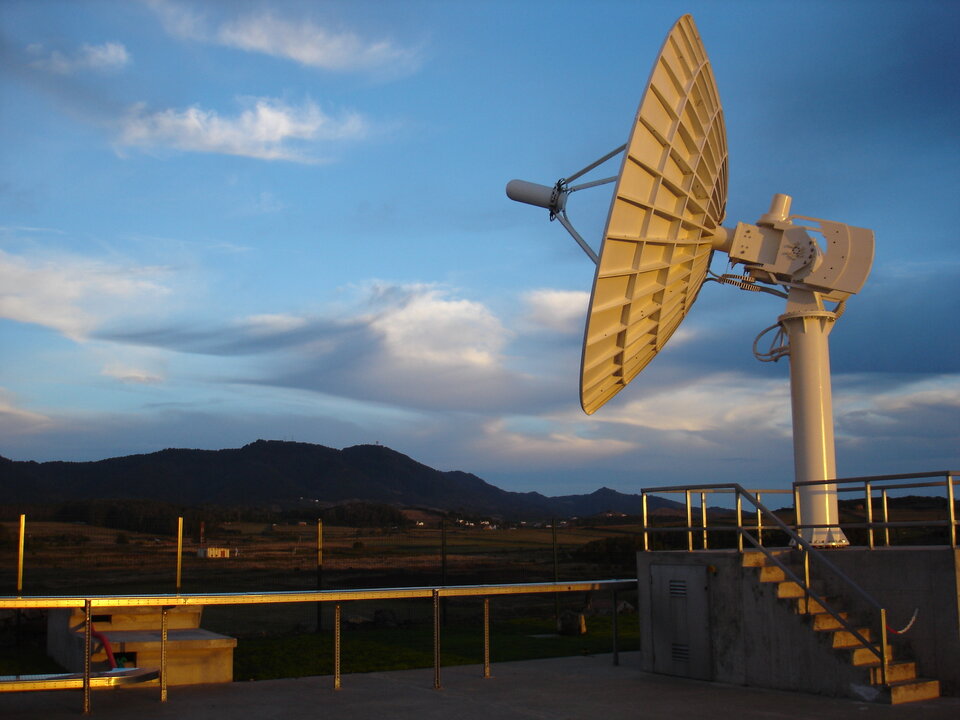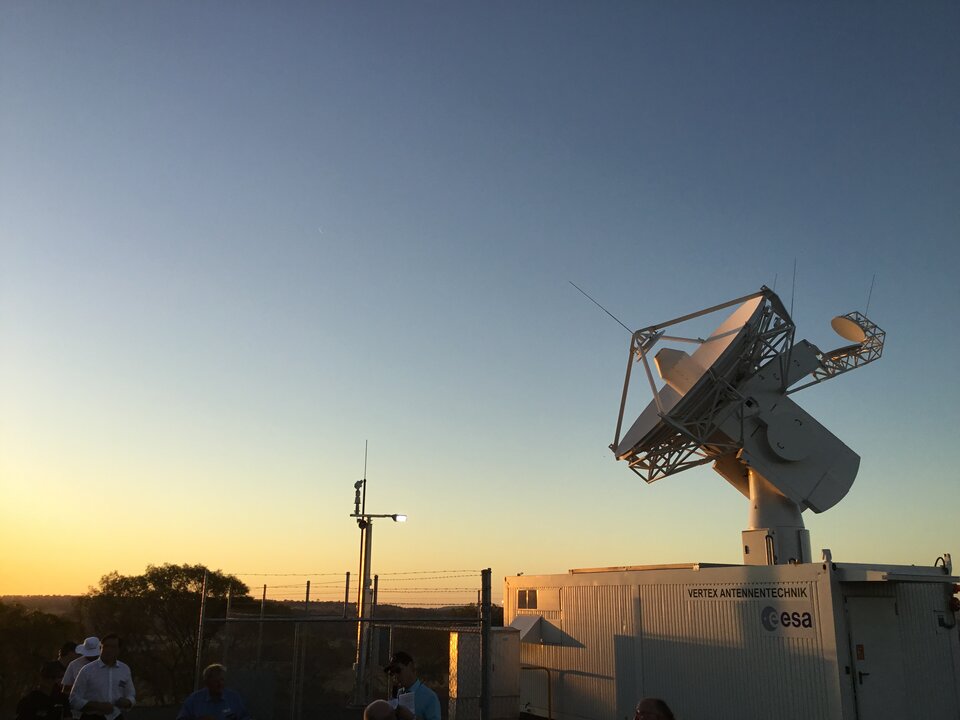5.07.2024
![]()
A network of ground stations around the world, including two owned by ESA, will track the debut flight of Europe’s new Ariane 6 rocket. They will monitor key phases of the flight and gather telemetry and video that will be used to analyse the rocket’s performance and optimise future launches.

As Ariane 6 thunders and roars as it rises into the sky from Europe's Spaceport in Kourou, French Guiana, activity on the ground continues. The launcher control team in Kourou monitor an influx of data from ground stations scattered along the rocket’s flight path that receive telemetry as it passes overhead at up to 28 000 km per hour.
“Ground station tracking is the only way to get any information from a launcher and ensure safety on the ground,” says Gerhard Billig, Launcher Tracking Service Manager at ESA’s ESOC operations centre in Germany.
“It’s crucial to monitor the health and performance of the launcher during major flight milestones, such as phases of active thrust and payload separation. Once a launch is complete, these tracking data can be used to fine-tune the launcher’s performance, making every future launch even more precise and reliable.”

ESA’s stations in Santa Maria, Portugal, and New Norcia, Australia, supported many Ariane 5 launch campaigns and will return to action for the debut flight of its successor, Ariane 6, this month.
They will form part of the ‘downrange tracking network’ for the first flight of Ariane 6 under the responsibility and organisation of the French Space Agency, CNES. The ESA stations will join stations from CNES and other partners at Galliot and Saint-Jean du Maroni (France), Bermuda (UK), Aussaguel (France), and Lucknow (India). Future flights will be supported by different stations depending on their trajectory.

Initially established to communicate with satellites, ESA’s ground station network – Estrack – was expanded to support rocket launches in 2008 with the addition of a ground station and 5.5 m antenna on Santa Maria Island in the Azores archipelago in the Atlantic Ocean.
From here, the station has visibility over a large portion of the Atlantic Ocean. During its debut flight, Ariane 6 will fly northeast over the Atlantic and Santa Maria will track it during the first engine cut-off of its upper-stage.

Around 50 minutes after launch, Ariane 6 will appear above the horizon in Western Australia. ESA’s New Norcia station in Western Australia is home to one of the agency’s 35 m deep space dishes, which is used to communicate with missions such as Juice and Solar Orbiter while they are many millions of km away.
However, the size and technology required to track these distant spacecraft is not ideal for tracking fast-moving rockets. Tracking launchers on trajectories like that of the first Ariane 6 is instead carried out by the site’s smaller, 4.5 m dish.
Known as ‘New Norcia 2’, the smaller antenna is more agile and has a wider field of view, allowing it to lock on to the signal from a launcher even when its exact location in the sky is not known. It can also carry out rapid sky searches in case a launcher over- or underperforms.
“Compared to a satellite, a launcher is a very dynamic object: it can rotate and thrust as it passes overhead,” says Gerhard Billig. “As a result, the radio signal we receive on the ground can fluctuate a lot. Our antennas must be able to automatically track the rocket wherever it goes, and our teams must be able to react very quickly to any contingency to ensure no data are lost.”
“We have been hard at work preparing Santa Maria and New Norcia for the first Ariane 6 launch. During the flight, we will receive multiple different streams of data, one of which will be video that will be processed at the ground stations and forwarded to the team at the launch site for analysis and live distribution.”
“I was lucky enough to watch an Ariane 5 launch in person,” says Billig. “It was an amazing experience; I distinctly remember how the sound from the launch hit me unexpectedly as, by the time it arrived, the rocket was already high in the sky. We are very much looking forward to putting our work into action for the first flight of its successor, Ariane 6.”
Quelle: ESA
